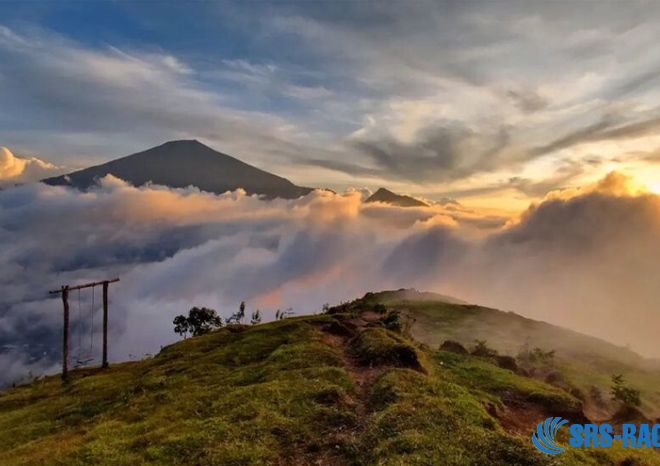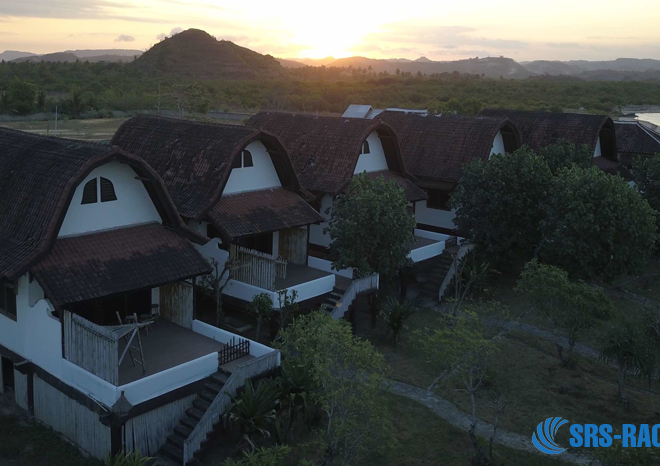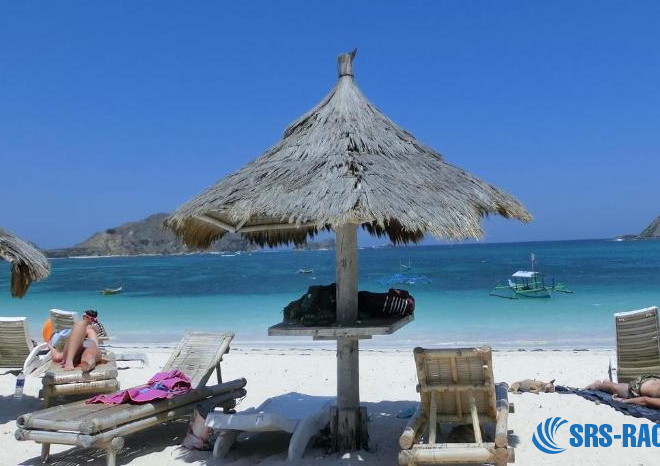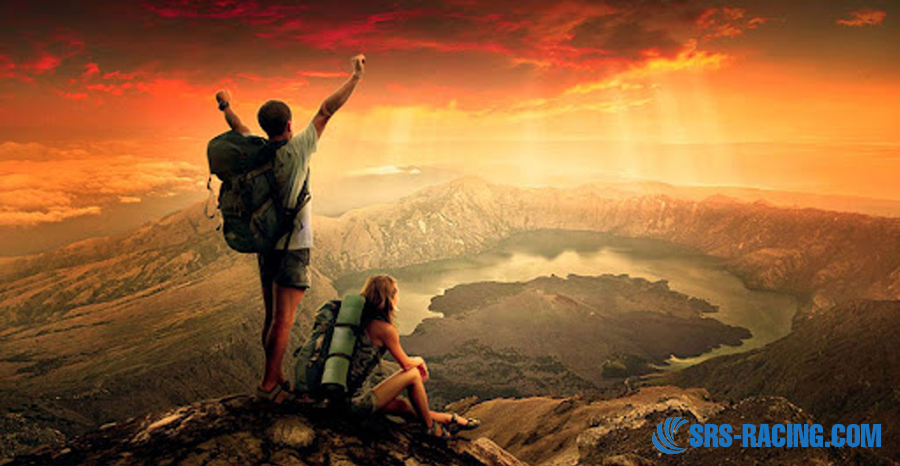
Exploring the Trails of Rinjani Volcano Lombok
Mount Rinjani, a magnificent active volcano located on the island of Lombok, Indonesia, is the second highest volcano in the country, reaching an impressive height of 3,726 meters. This towering peak is not only a geological marvel but also a magnet for adventurers and nature lovers from around the world. Trekking enthusiasts often find themselves drawn to Rinjani Volcano Lombok for its breathtaking landscapes, challenging trails, and the serene crater lake of Segara Anak. Whether you’re an experienced hiker or a first-time visitor, exploring this volcanic wonder is an unforgettable journey.
The allure of Rinjani Volcano Lombok lies in its diversity of experiences. From lush rainforests and rugged volcanic slopes to sacred lakes and panoramic views, each element contributes to its global appeal. Additionally, its location in Lombok adds to its accessibility and charm, making it a must-visit for those seeking adventure in Indonesia. However, before embarking on a trek to Rinjani Volcano Lombok, it’s essential to understand its geography, routes, and significance.
Table of Contents
ToggleRinjani Volcano: A Majestic Peak in Lombok

Rinjani Volcano Lombok stands as a prominent feature of the island’s landscape, characterized by its steep slopes, expansive crater, and awe-inspiring views. The summit offers a panoramic view that stretches over the entire island, with glimpses of Bali and Sumbawa on clear days. Trekking to the top of this active volcano is an experience filled with both physical challenges and rewards.
While the climb is not without its difficulties, those who reach the summit describe it as a life-changing journey. Trekkers are often mesmerized by the beauty of the crater rim, which provides sweeping views of the turquoise Segara Anak Lake. For those who choose not to ascend to the summit, the crater rim itself is a worthwhile goal, offering stunning vistas of the surrounding landscapes and the lake below.
The Geography of Mount Rinjani
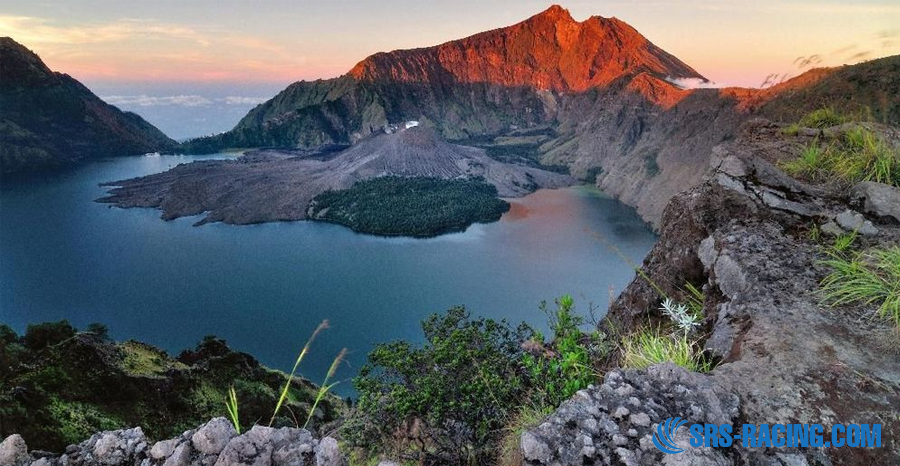
The geography of Rinjani Volcano Lombok is unique and multifaceted, with its terrain shifting from lush, tropical forests at the base to rocky and barren slopes near the peak. This diversity in the landscape is a result of the volcanic activity that has shaped the region over thousands of years. The existence of the massive Segara Anak Crater Lake within the caldera adds to Rinjani’s geological allure, creating a captivating blend of water and volcanic rock.
The vast area surrounding Mount Rinjani is part of a national park, preserving its unique flora and fauna while maintaining the ecological balance. The transition from dense forests to alpine terrain at higher elevations showcases the beauty of Lombok’s volcanic environment.
Location and Significance of Rinjani
Rinjani Volcano Lombok is located in North Lombok Regency, within Mount Rinjani National Park. The park spans an area of 41,330 hectares and includes not only the mountain itself but also the surrounding forests and significant ecological zones. The volcano holds cultural and spiritual significance for the local Sasak people and Balinese Hindus, who believe the mountain to be sacred. Annual ceremonies are held at Segara Anak Lake to honor the mountain’s spirits, further emphasizing its cultural importance.
Segara Anak: The Volcanic Crater Lake
At the heart of Rinjani Volcano Lombok lies Segara Anak, a vast crater lake that covers approximately 11 square kilometers. This lake, often referred to as the “Child of the Sea,” holds special significance for both locals and visitors due to its unique formation and tranquil beauty. Formed within the massive caldera of Rinjani, the lake is the result of the volcano’s historic eruptions, with the most prominent being the eruption of Mount Samalas in the 13th century.
Segara Anak is not just a scenic wonder; it also serves as the center for various religious rituals and is considered sacred by the island’s Hindu and Sasak communities. The lake’s calm waters contrast with the surrounding rugged landscape, creating an otherworldly atmosphere that draws trekkers to its shores.
The Active Status of Rinjani’s Volcano
Rinjani Volcano Lombok is an active stratovolcano with a long history of eruptions. The last significant eruption occurred in 2010, when activity at the smaller Barujari cone within the caldera resulted in ash emissions and increased temperatures in the crater lake. Although the eruptions did not cause direct damage to nearby settlements, they served as reminders of the mountain’s volatile nature. The trails are well-maintained, but hikers are advised to stay cautious, especially during periods of volcanic activity.
Understanding the active nature of Rinjani Volcano Lombok is crucial for trekkers, as the volcanic landscape continues to evolve. Authorities closely monitor the volcano, and trekking routes may be restricted or altered based on its current activity level. Therefore, it’s important to stay informed about recent developments before planning a visit.
Best Time to Trek Mount Rinjani
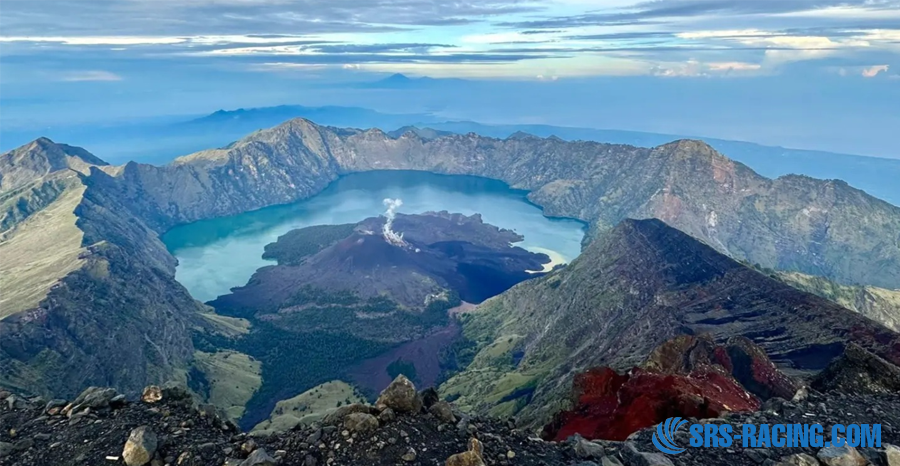
Trekking Rinjani Volcano Lombok is a thrilling adventure that requires careful planning, especially when it comes to timing. The best time to visit the mountain is largely dependent on weather conditions, as certain months offer ideal trekking conditions, while others should be avoided. Knowing the right season ensures that you’ll experience the beauty of Mount Rinjani without being hindered by bad weather or safety concerns. It’s essential to align your trek with the dry season to fully appreciate the diverse landscapes, breathtaking views, and the challenging yet rewarding journey to the summit.
Moreover, trekking Rinjani Volcano Lombok during the appropriate months can greatly enhance your overall experience, as the trails will be in their best condition, and the chances of sudden weather disruptions will be minimized. Let’s explore the optimal trekking seasons and what you should avoid during the monsoon months.
Trekking Season (April to December)
The prime season for trekking Rinjani Volcano Lombok is from April to December. During these months, the weather is dry and favorable, providing excellent visibility and stable trail conditions. The period from April to May, in particular, is often considered the best time, as it falls just after the rainy season, leaving the landscape lush and the air clear. Similarly, September to November offers cooler temperatures, making it ideal for those seeking a more comfortable trek.
The dry season brings with it clear skies, stunning views of the crater lake, and the added bonus of being able to enjoy beautiful sunrises and sunsets from the crater rim. For adventure seekers, this season offers the perfect combination of pleasant weather and challenging terrain, making the trek both exhilarating and manageable.
Avoiding the Monsoon Season
It’s crucial to avoid trekking Rinjani Volcano Lombok during the monsoon season, which typically spans from January to March. During these months, the mountain is often closed to trekkers due to heavy rainfall and increased risk of landslides, making the trails dangerous and impassable. The National Park authorities strictly monitor weather patterns and close the park to ensure the safety of visitors.
In addition to safety concerns, the monsoon season limits visibility, reduces the enjoyment of the scenic views, and can turn the trek into an unpleasant experience with slippery, muddy paths. Planning your trek outside of the monsoon months ensures that you’ll have a safer and more enjoyable adventure on Rinjani Volcano Lombok.
Choosing a Rinjani Trekking Route
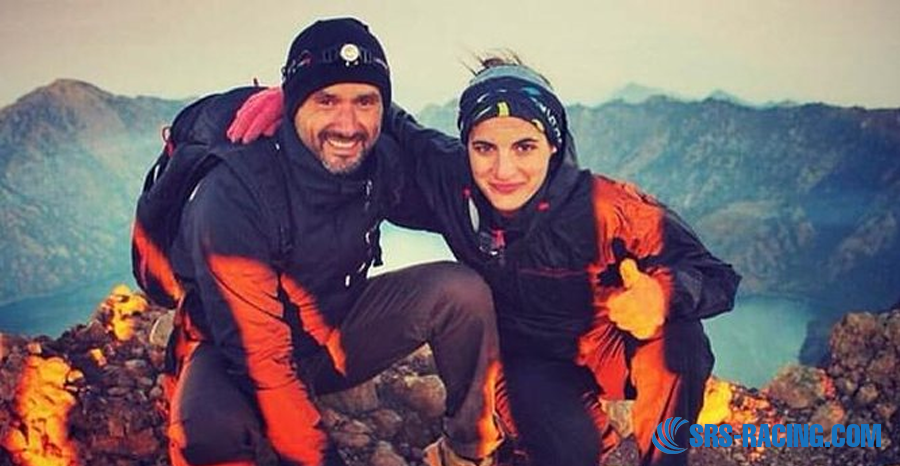
Trekking Rinjani Volcano Lombok is a journey that offers a variety of routes, each catering to different fitness levels and preferences. Choosing the right route is crucial to ensuring a successful and enjoyable trek. Whether you are looking for a shorter, more intense experience or a longer, more leisurely adventure, there are several options to consider. The most popular routes are Sembalun and Senaru, each offering unique perspectives of Mount Rinjani’s natural beauty. Additionally, the duration of the trek plays a significant role in shaping the overall experience, ranging from quick 2-day trips to extended 4-day treks. In recent years, new trekking routes have been introduced, providing more flexibility and opportunities for exploration.
Understanding the differences between these routes will help you select the one that best aligns with your goals and physical ability. Let’s dive into the details of each route, the typical trekking durations, and some recent updates that will guide your adventure on Rinjani Volcano Lombok.
Popular Routes: Sembalun vs. Senaru
The two primary routes for trekking Rinjani Volcano Lombok are Sembalun and Senaru, each offering distinct experiences.
- Sembalun Route: This route is preferred by those aiming for a quicker ascent to the summit. Starting at a higher altitude (1,150 meters), the Sembalun trail has a more gradual incline, making it slightly easier for trekkers to reach the summit, though the final climb is still demanding due to loose volcanic sand. This route offers stunning views of the surrounding valleys and rolling grasslands, but trekkers should be prepared for exposed, sunny sections.
- Senaru Route: Starting at a lower elevation (600 meters), the Senaru route takes trekkers through lush tropical forests and diverse landscapes before reaching the crater rim. This route is favored by those looking for a more scenic and gradual ascent. Although reaching the summit from this route is longer and more physically demanding, it offers a richer experience with more diverse scenery along the way.
Both routes provide access to the breathtaking Segara Anak Lake and the crater rim, making either option a memorable journey on Rinjani Volcano Lombok.
Trekking Duration: 2-Day vs. 4-Day Treks
The duration of your trek up Rinjani Volcano Lombok can vary, depending on your fitness level, the time you have available, and how much of the mountain you wish to explore.
- 2-Day Trek: The shortest option is typically a trek to the crater rim and back. This route is ideal for those who are short on time but still want to experience the beauty of Mount Rinjani. Starting from either Sembalun or Senaru, this trek involves camping one night at the crater rim, offering spectacular views of the lake and surrounding landscape. While you won’t have time to reach the summit, this option still provides a fulfilling experience.
- 4-Day Trek: For a more immersive experience, the 4-day trek is highly recommended. This longer route includes a trek to the summit, a descent into the caldera to visit Segara Anak Lake, and a chance to bathe in the hot springs. The extra time allows for a more leisurely pace, with multiple opportunities to explore different aspects of Rinjani Volcano Lombok. This extended trek is perfect for those who want to fully embrace the adventure and beauty of the mountain.
New Trekking Routes and Recent Updates
In recent years, new trekking routes have been introduced to expand the options for visitors to Rinjani Volcano Lombok. One such route is the Aik Berik trail, which offers a less crowded alternative to the popular Sembalun and Senaru trails. This route begins on the southern side of the mountain and leads to the crater rim, though it does not provide access to the summit. The Aik Berik trail offers a more secluded experience, with dense forests and quiet paths that appeal to those seeking tranquility.
Additionally, trail maintenance and park management have improved following the 2018 earthquakes, with some routes undergoing repairs and upgrades to enhance safety and accessibility. The Rinjani Trek Management Board continues to monitor and adjust routes as needed, ensuring that trekkers have the best possible experience while preserving the natural environment.
By selecting the right route and trek duration, you can ensure that your journey up Rinjani Volcano Lombok is both challenging and rewarding, offering stunning landscapes and unforgettable memories.
Essential Tips for Trekking Mount Rinjani
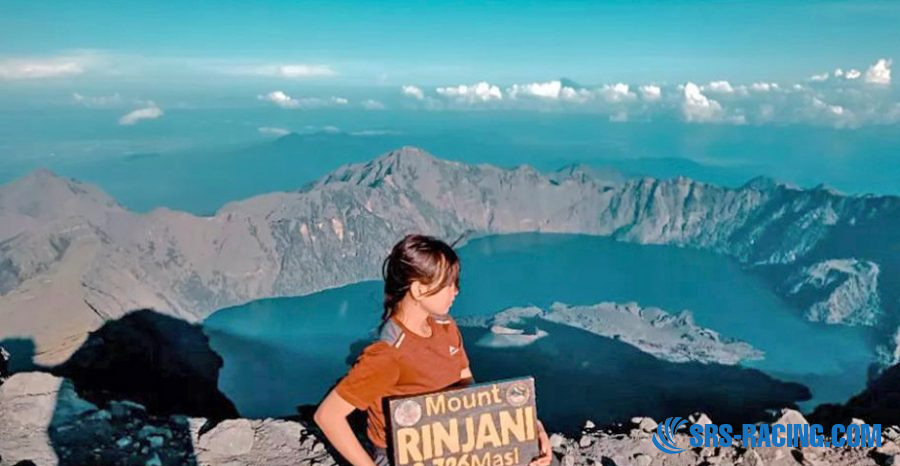
Trekking Rinjani Volcano Lombok is a thrilling yet challenging adventure that requires more than just enthusiasm. Proper preparation is key to ensuring a safe and enjoyable experience. Given the steep terrain, variable weather conditions, and high altitudes, it’s essential to approach the trek with the right mindset, fitness level, and equipment. Whether you are a seasoned trekker or a beginner, following these essential tips will help you make the most of your journey. From physical preparation to knowing what to pack and how to stay safe, the following guidance will ensure that your trek to Rinjani Volcano Lombok is both successful and memorable.
In the following sections, we will cover the critical aspects of fitness, necessary equipment, and safety measures, all of which are crucial when preparing for a trek up one of Indonesia’s most famous volcanic peaks.
Fitness Level and Preparation
Trekking Rinjani Volcano Lombok is no small feat, and it requires a solid level of physical fitness. The trails are steep, and the altitude gain is significant, especially for those attempting to reach the summit. For those planning to complete the multi-day trek, a certain degree of stamina and strength is necessary to navigate the rugged terrain and endure long hiking hours.
- Cardio Training: Regular cardiovascular exercises, such as running, cycling, or swimming, should be part of your preparation. These exercises help build endurance, which is essential for long days of trekking, particularly when facing steep inclines.
- Strength Training: Core and leg strength are critical. Incorporate exercises like lunges, squats, and step-ups into your routine to build the muscle strength needed for climbing and descending the steep slopes of Rinjani Volcano Lombok.
- Acclimatization: If possible, try to acclimatize to the altitude before attempting the summit. While Rinjani Volcano Lombok doesn’t reach extreme altitudes, the climb to over 3,700 meters can still present challenges for some, so it’s important to pace yourself and listen to your body during the trek.
Equipment Checklist for Mount Rinjani
Having the right gear is crucial for a comfortable and safe trek up Rinjani Volcano Lombok. Packing light while ensuring you have all essential items is key. Below is a checklist of recommended equipment:
- Footwear: Sturdy, broken-in hiking boots with good grip are a must, as the trails can be rocky and slippery.
- Clothing: Pack lightweight, moisture-wicking clothing for daytime hikes, and warmer layers (fleece, thermals) for the colder temperatures at higher altitudes and at night.
- Rain Gear: Weather on Rinjani Volcano Lombok can be unpredictable, so bring a waterproof jacket and backpack cover to protect against sudden downpours.
- Backpack: A 40-liter backpack is usually sufficient for multi-day treks, as most tour operators provide tents and meals. Make sure your backpack is comfortable for long hikes.
- Headlamp: Essential for early morning summit treks when you’ll be hiking before sunrise.
- First-Aid Kit: Include basic first aid supplies, such as bandages, blister treatments, antiseptic wipes, and pain relievers.
- Snacks and Hydration: Carry energy bars, nuts, and other high-calorie snacks. Don’t forget a reusable water bottle or hydration pack, as staying hydrated is critical.
Staying Safe on the Mountain
Safety should be a top priority when trekking Rinjani Volcano Lombok. The combination of steep ascents, altitude, and unpredictable weather can pose risks, so it’s essential to take the necessary precautions:
- Hire a Guide: While trekking solo is possible, it is highly recommended to hire an experienced guide who knows the terrain and can assist in case of any emergencies. Guides are familiar with the safest routes and can help navigate the more difficult sections of the trek.
- Watch for Altitude Sickness: Although the risk of altitude sickness is relatively low on Rinjani Volcano Lombok, it’s still important to be aware of the symptoms, such as headaches, nausea, and dizziness. If you start feeling ill, descend to a lower altitude and rest.
- Pace Yourself: Don’t rush the trek. The climb is physically demanding, and it’s important to go at a pace that allows you to conserve energy for the summit. Rest when needed and ensure you’re drinking enough water.
- Stay on Marked Trails: To avoid accidents, always stick to the marked trails. Some sections of the trek, especially near the summit, can be narrow and steep, so follow your guide’s instructions closely.
By following these essential tips, you can ensure a rewarding and safe experience when trekking Rinjani Volcano Lombok. Preparation, proper equipment, and safety measures are key to making the most of this once-in-a-lifetime adventure.
Responsible Tourism: Protecting Mount Rinjani
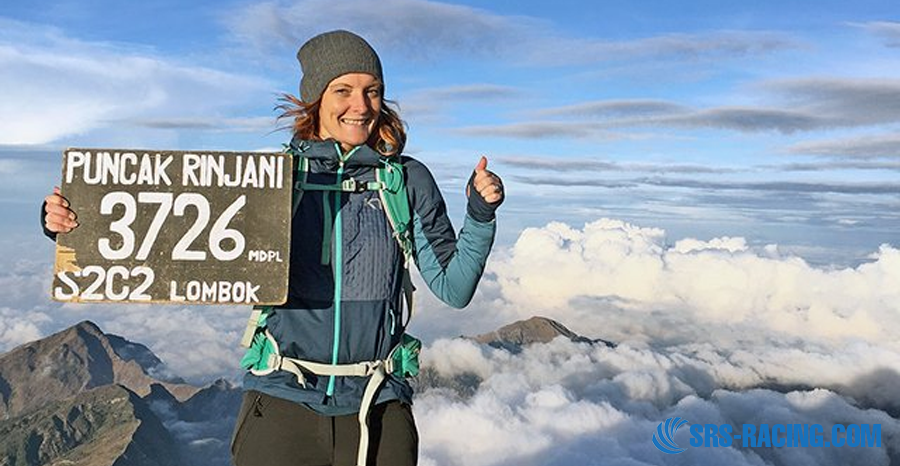
As the number of trekkers visiting Rinjani Volcano Lombok increases, so does the responsibility to preserve its pristine environment. Mount Rinjani is not only a natural wonder but also an ecological treasure, home to diverse flora and fauna, and a sacred site for the local communities. With its growing popularity, the impact of tourism has become a serious concern, making responsible trekking more important than ever. Trekkers must take steps to minimize their environmental footprint and contribute to the preservation of this beautiful and culturally significant landscape.
Engaging in responsible tourism not only protects Rinjani Volcano Lombok for future generations but also enhances your own trekking experience by ensuring the trails remain clean, safe, and enjoyable. In this section, we will discuss the environmental challenges posed by tourism and provide tips on how to trek responsibly.
Environmental Impact of Tourism
Tourism, while beneficial to the local economy, has unfortunately contributed to environmental degradation on Rinjani Volcano Lombok. The influx of visitors has led to issues such as:
- Littering: One of the most visible impacts of tourism on Mount Rinjani is the accumulation of waste. Many budget tour operators fail to implement proper waste disposal measures, leading to litter being left along the trails and at campsites. Plastic bottles, food wrappers, and other non-biodegradable materials are often left behind, harming the environment and wildlife.
- Trail Erosion: The sheer number of trekkers using the same paths year-round has led to significant erosion of the trails. This problem is exacerbated during the rainy season, when heavy rainfall causes mudslides and further destabilizes the terrain.
- Wildlife Disruption: The presence of large numbers of tourists can disturb the local wildlife, including rare species such as the ebony leaf monkey. Increased human activity near the crater lake and in forested areas can disrupt the natural habitats of these animals, putting their populations at risk.
Addressing these issues requires both awareness and action from trekkers, tour operators, and the local authorities.
How to Trek Responsibly
To protect Rinjani Volcano Lombok and its fragile ecosystem, it’s important to adopt responsible trekking practices. Here are some tips on how to minimize your environmental impact:
- Leave No Trace: One of the most important principles of responsible tourism is the “leave no trace” ethic. This means that you should pack out all of your trash, including food wrappers, plastic bottles, and any other waste, and ensure it is properly disposed of after your trek. Many reputable trekking companies provide trash bags and encourage hikers to clean up the trails.
- Choose Sustainable Tour Operators: When booking your trek, select tour operators who are committed to eco-friendly practices. Look for companies that limit the size of trekking groups, use sustainable equipment, and have a strong track record of cleaning up after their clients. Operators who are involved in the maintenance and conservation of the park are more likely to follow responsible tourism practices.
- Stick to Designated Trails: Staying on marked trails is crucial to minimizing your impact on the environment. Wandering off-trail can cause further erosion and damage sensitive plant life. Always follow your guide’s instructions and avoid creating new paths.
- Minimize Plastic Use: Bring reusable water bottles and containers to reduce the amount of plastic waste generated during your trek. Many trekking operators provide fresh water at campsites, so there is no need to bring single-use plastic bottles.
- Respect Wildlife: While encountering wildlife on your trek can be a highlight of the experience, it’s important to respect their space. Avoid feeding animals or approaching them too closely, as this can disrupt their natural behaviors and put them at risk.
Trekking Rinjani Volcano Lombok is an adventure like no other, offering a combination of physical challenge and natural beauty that leaves a lasting impression. From its awe-inspiring crater lake to the panoramic views from the summit, every aspect of the journey is a testament to the power and allure of nature. However, as more visitors are drawn to this iconic mountain, it’s crucial to prioritize responsible tourism to preserve its beauty for future generations.
By preparing properly, choosing sustainable trekking practices, and respecting the environment and local communities, you can ensure that your adventure to Rinjani Volcano Lombok is not only fulfilling but also contributes to the long-term protection of this stunning natural wonder. Whether you’re an experienced trekker or a first-time adventurer, Rinjani’s beauty and challenges will stay with you long after you descend its slopes.
